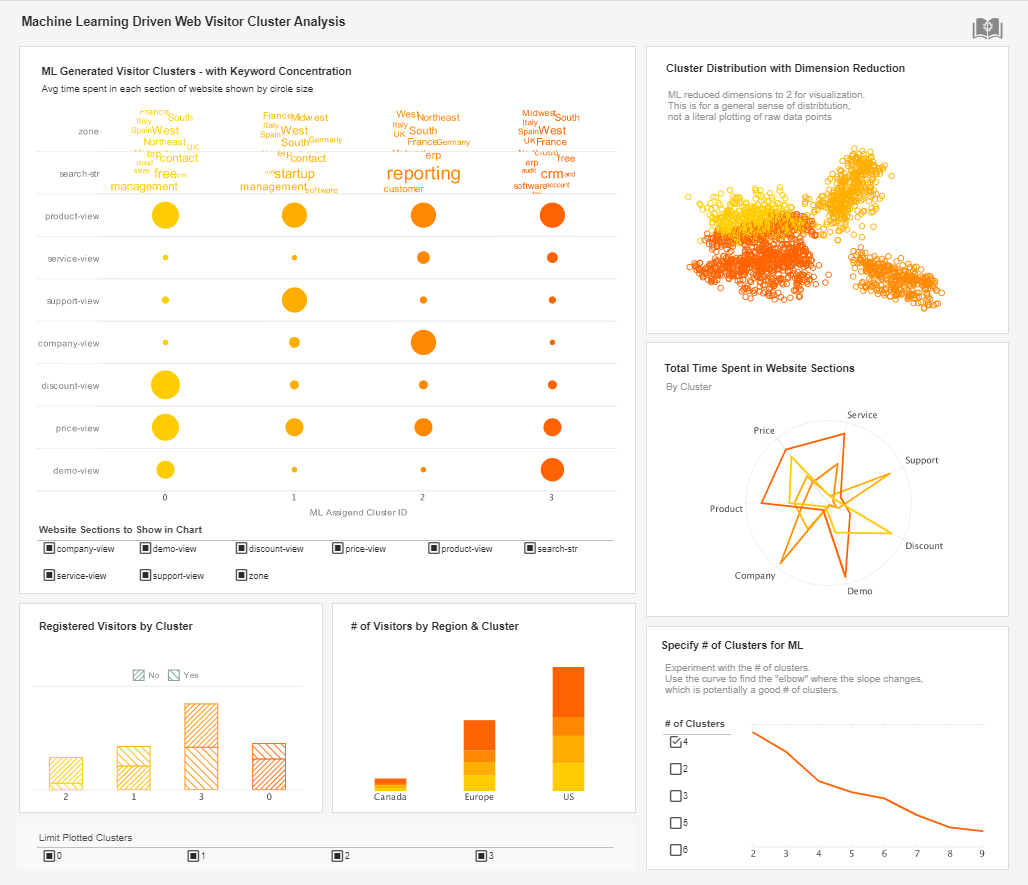InetSoft Webinar: How To Automate Decisions and Actions
Below is the continuation of the transcript of a Webinar hosted by InetSoft on the topic of the Power of Data with Embedded Analytics Tools. The presenter is Abhishek Gupta, Chief Data Scientist at InetSoft.
We see a lot of organizations looking at how to automate decisions and actions. Thinking back to the idea of embedding business intelligence in systems, organizations are certainly very much looking at how they can take decisions that are routine or repeated decisions and figure out how they can automate them using software.
Lots of these things are tending in the direction of improving the idea of embedding BI. Looking again just a little closer to the user experience, self-service BI and analytics has been the dominant trend and certainly is still something that we see organizations trying to pursue. Some hit a wall though because, again, the inability to bring in those non technical users.
Many knowledge workers who are using line of business applications, more point applications, and don't have the time or the skills or even some of the interest to dive in and really learn about BI and analytics to be able to access more data and work interactively with the data. They want their dashboards in an easier environment that fits with their subject matter expertise and their level of experience in working with data which is often not high.
Along with this, of course, the user IT relationship is changing. Self-service is great for empowering users because users know better what they need. They often know the data. They can ask the right questions. It's often difficult for IT or BI developers to understand what the users are looking for, so self-service BI is for the good.
| #1 Ranking: Read how InetSoft was rated #1 for user adoption in G2's user survey-based index | Read More |
Balance Self-Service Analytics With Governance
But, of course, IT increasingly needs to be looking at data governance, BI performance, how they can balance this flexibility of the user, the self-service analytic environment with governance. This is playing out as well in the development and deployment of embedded BI systems as well as BI platforms. It's how they create that correct balance because it's more sophisticated.
Embedded analytics are being provided inside frontline applications. Again, IT needs to be thinking about. How are we going to govern these and how are we going to enable that kind of flexibility that users need, but at the same time address the governance and performance and platform kind of needs.
All of this is important for meeting dynamic business intelligence needs, and so this is certainly what organizations are really facing. They don't want to have the feet in cement problem, where they have so much data, it's great, but it actually buries them, and they're not able to make decisions in time with business needs.
A lot of what's going on in our sector, of course, is around how do you support dynamic decision making? How do you address things that come up quickly? Maybe it could be something like a marketing campaign that is launching, and they need some more analytics around it. But it also could be something that was unexpected in the marketplace. It could be an unexpected trend that they're seeing amongst suppliers or customers that needs to be responded to quickly, and they can't wait until the usual process is done. How do you meet dynamic decision support needs?
Learn how InetSoft supercharges BI with Spark to make machine learning easy. |
Embedded Decision Support Systems
Again, a lot of embedded decision support systems in earlier days were not really well equipped for that. They were too static or kind of simple. It might've been reports or static dashboards, and so this is a revolution that is having to occur in those kinds of embedded systems as well, how to supply them with the kinds of data interaction capabilities, the visualization capabilities, the ability to bring systems up more quickly so that you can meet those dynamic business needs.
We see a smarter use of automation embedded BI functionality to, again, make things quicker, make it easier for users. In context recommendations, some of these using AI and machine learning behind the scenes to create those kinds of predictive recommendations, or understanding of patterns and providing that. But the key issue there is really in context, providing it in the context of the subject matter experts' business process, the kinds of things that are important in their role and responsibility.
| Previous: Embedded Data Intelligence Solutions | Next: The Benefit of Integrated Data Preparation |



